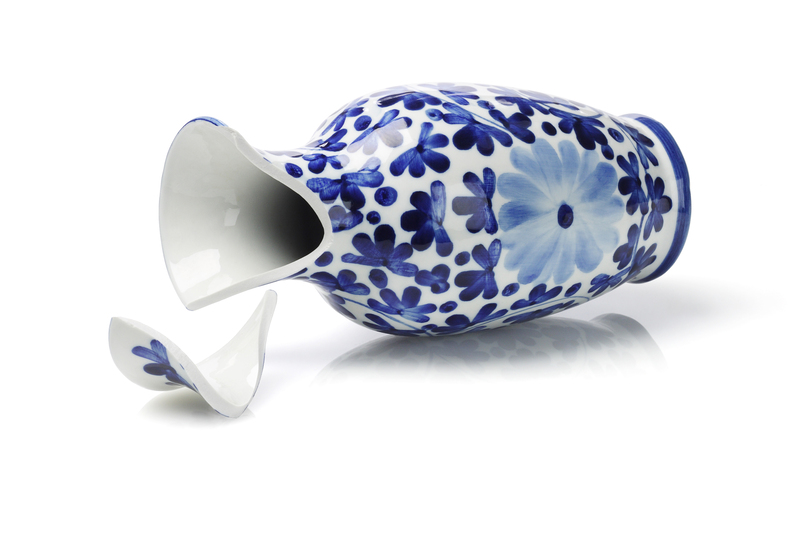Best Practices for Freezer Storage When Not in Use
Posted on 26/05/2025
Best Practices for Freezer Storage When Not in Use
Storing your freezer when it's not in use requires more than simply unplugging the appliance and walking away. Proper preparation, cleaning, and positioning are crucial to maintain its longevity and efficiency. Whether you're moving, renovating, or just taking your freezer offline for a season, following comprehensive best practices for freezer storage when not in use can prevent unpleasant odors, mildew, damage, and even costly repairs down the road.
Why Proper Freezer Storage Matters
A freezer is a significant investment, and neglecting it during storage--or when left unused for longer periods--can lead to:
- Mold or mildew buildup
- Unpleasant odors
- Rust or corrosion
- Inefficient performance upon re-use
- Costly repairs or reduced lifespan

Step-By-Step Guide to Freezer Storage When Not in Use
1. Empty the Freezer Completely
Before storing a freezer, always remove all food items. Even non-perishables or sealed containers can harbor bacteria or leak, causing odors and stains. Empty freezers are easier to clean and will prevent unwanted infestations while not in use.
2. Unplug and Defrost
Unplug the unit and open the freezer door. Allow all ice to melt completely. This step prevents flood damage and helps you identify any drainage issues before storage. To speed up the process, you can:
- Place bowls of hot water inside the freezer
- Use a hairdryer (on low setting) to gently melt ice--never use sharp tools!
- Lay towels at the base to absorb excess water
3. Thoroughly Clean and Sanitize
Once fully defrosted, clean all interior surfaces with warm soapy water or a mix of water and baking soda (1 tablespoon baking soda per quart of water) for odor removal. Pay attention to:
- Shelves, bins, and drawers
- Door gaskets and seals
- Drip trays and vents
4. Dry Out Completely
Moisture is the enemy of a stored freezer. Leave the door open for at least 24 hours with the unit unplugged, allowing all surfaces and crevices to air dry. You may also place a dry towel and change if it becomes damp. If possible, point a fan toward the interior to speed up drying.
5. Care for Gaskets and Seals
Inspect all rubber door seals for food residue, mold, or cracks. Clean them with a solution of equal parts vinegar and water, then treat gaskets with a silicone-based conditioner or a thin layer of petroleum jelly to prevent them from drying out and cracking during storage.
6. Deodorize Before Storing
Place odor-absorbing materials such as:
- An open box of baking soda
- Charcoal briquettes (non-instant type)
- Commercial odor absorbers
7. Prop Door Open Slightly
Never close the freezer door completely when storing it unused.
- Use a towel, wooden block, or special door prop to keep the door ajar by at least one inch.
- This allows air circulation, preventing mold, odors, and mildew from developing.
- If your freezer will be unattended, ensure the door won't close accidentally.
8. Store in a Safe, Dry Location
When choosing the storage location for your unused freezer:
- Opt for cool, dry areas such as a climate-controlled basement, garage, or storage facility.
- Avoid direct sunlight, damp environments, or outdoor exposure to rain and humidity, which may cause rust.
- If possible, elevate the freezer on pallets to keep it off the ground and allow airflow beneath.
9. Protect the Exterior
Wipe down the exterior with mild detergent and water. For stainless steel finishes, use a proper polish. Once dry:
- Cover the freezer loosely with a breathable fabric or appliance cover (avoid plastic wraps that trap moisture)
- Check for scratches or dents and address them promptly to prevent rust
10. Prevent Rodent and Insect Intrusion
Pests are attracted to food smells and dark, sheltered spaces. Reduce the chances of infestation by:
- Thorough interior cleaning (especially gaskets and hinges)
- Positioning the freezer away from trash cans or compost bins
- Regularly checking the appliance and the surrounding area for signs of pest activity
11. Check Warranty and Insurance Implications
Review your freezer's warranty and homeowners' insurance policy:
- Some warranties require periodic maintenance even when the appliance is stored.
- If storing for months or seasons, inform your insurance company for coverage clarity.
How to Recommission the Freezer After Storage
Inspection Before Use
When you're ready to use your freezer again, follow these crucial steps:
- Check for dust, insects, or rodents. Clean as needed.
- Inspect gaskets for integrity and suppleness.
- Reinstall removed shelves or bins.
Plug In and Test
Plug in the freezer and run it empty for several hours. Monitor the temperature to ensure it reaches and maintains the optimal freezing level (typically -18?C or 0?F). Address any strange noises or leaks immediately.
Frequently Asked Questions: Freezer Storage When Not in Use
Should I leave my freezer plugged in if not in use for a few weeks?
No. If you won't be using your freezer for more than a week, it's best to empty, clean, dry, and unplug it. Leaving it running wastes energy and increases fire risk if not monitored.
Can I cover my unused freezer with plastic?
Plastic covers are not recommended. They can trap condensation and promote mold or rust. Instead, use a breathable cloth or appliance cover.
How do I prevent odors during long-term freezer storage?
Clean thoroughly and leave an odor absorber inside with the door propped open.
Is it safe to keep a freezer in the garage when not in use?
Yes, if the garage is dry and well-ventilated. Avoid areas prone to extreme humidity or temperature swings, which can damage components.
Should the freezer be stored upright or can it be laid on its side?
Freezers should be stored upright whenever possible. Laying them on their side can cause compressor oil to flow into the cooling lines, potentially harming the appliance.

Freezer Storage Best Practices: Quick Reference Checklist
- Empty the freezer of all contents
- Defrost and clean thoroughly
- Dry all surfaces completely
- Deodorize and treat gaskets
- Store appliance in a cool, dry location
- Elevate off the ground if possible
- Prop the door open to prevent mold
- Cover with breathable fabric
- Check appliance periodically
Conclusion: Protect Your Freezer and Your Investment
Taking the time to follow the best practices for freezer storage when not in use will protect your appliance from damage, ensure safety, and make it ready for action when needed. Whether preparing for a move, a remodel, or just a change in season, a well-cared-for freezer will serve you reliably for years to come. Proper storage is not just about convenience--it's about maintaining efficiency, safety, and value.
Remember: Empty, clean, dry, protect and regularly check your unused freezer to keep it in top condition.
For more appliance care tips and detailed freezer maintenance guides, explore our blog's related resources below.



